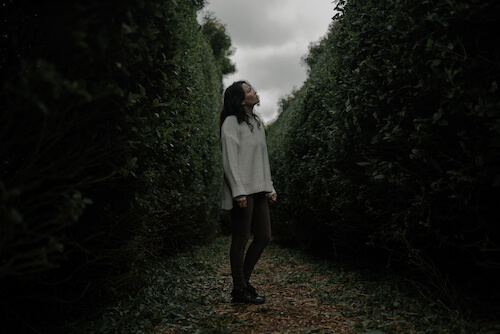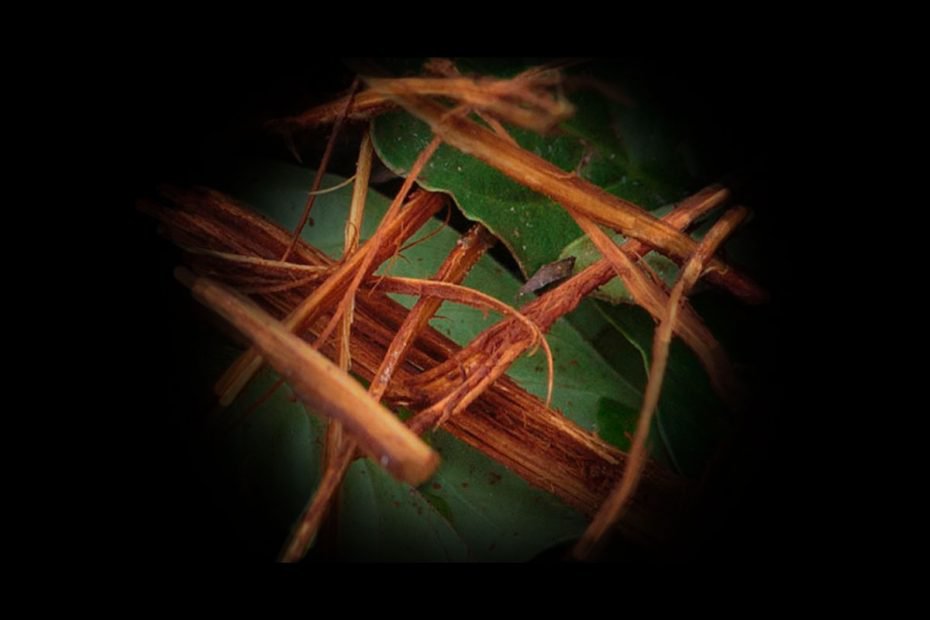How is it used?
Ayahuasca is drunk as a liquid.
Effects of ayahuasca
Use of any drug can have risks. It’s important to be careful when taking any type of drug.
Ayahuasca affects everyone differently, based on:
- size, weight and health
- whether the person is used to taking it
- whether other drugs are taken around the same time
- the amount taken
- the strength of the decoction (varies from batch to batch)
- environment (where the drug is taken).
The effects of ayahuasca can last between 4- to 6-hours and may include:
- nausea and vomiting (induced by drinking the decoction)*
- diarrhoea*
- euphoria
- feelings of connection and unity
- introspection
- intense visual and auditory hallucinations
- experiencing powerful emotions
- anxiety
- panic and fear
- moderate increase in blood pressure and heart rate
- increased body temperature.1, 3
*When ayahuasca is taken in a traditional or ritual setting, these effects may be perceived as cleansing or purging and a part of the spiritual or healing journey.1
Set and Setting
Ayahuasca can have varied effects depending on a person’s mood (often called the ‘set’) or the environment they are in (the ‘setting’):
- Set: a person’s state of mind, previous encounters with psychoactive drugs, and expectations of what’s going to happen.4 For example, feelings of anxiety or fear before using ayahuasca can be magnified and result in an unpleasant experience.
- Setting: the environment in which someone consumes ayahuasca – whether it’s known and familiar, who they’re with, if they’re indoors or outdoors, the type of music and light.4 For example, using ayahuasca in a calm, quiet and relaxed environment can lead to a please experience, but being in a noisy, crowded place may result in a negative experience.
Bad trips
Some people may have negative experiences taking psychedelics, or experiences they find challenging.** This can include experiencing:
- frightening or confronting hallucinations
- intense anxiety and confusion
- fear and paranoia1
**These experiences may be understood or interpreted differently in a traditional or ritual context, where they may be seen as lessons and part of a spiritual or healing journey rather than wholly negative.
Long-term effects
Ayahuasca does not appear to have a negative impact on the body.1 Existing research indicates that long-term use of ayahuasca is not associated with a loss of cognitive functioning or negative mental health outcomes.3, 5, 6
Tolerance and dependence
Repeated use of ayahuasca does not appear to result in tolerance to the effects, and it appears to pose an extremely limited risk for dependence.7
Mixing ayahuasca with other drugs
The effects of taking ayahuasca with other drugs − including over-the-counter or prescribed medications − can be unpredictable and dangerous.
Ayahuasca + MDMA or anti-depressants: because of the presence of MAOIs, mixing ayahuasca with other drugs that affect serotonin such as MDMA or anti-depressants such as selective serotonin reuptake inhibitors (SSRIs), may be particularly dangerous.2
Use of more than one drug or type of drug consumed at the same time is called polydrug use.8
More on Polydrug use
Polydrug use is a term for the use of more than one drug or type of drug at the same time or one after another. Polydrug use can involve both illicit drugs and legal substances, such as alcohol and medications.
Health and safety
There is no safe way to use psychedelic drugs, including ayahuasca.
If you do decide to take ayahuasca, it’s important to consider the following.
- It is difficult to predict the strength and effects of ayahuasca. People can have very different experiences taking the same drug on different occasions.
- People with mental health conditions or a family history of these conditions should avoid using ayahuasca.
- Sometimes other drugs may be sold claiming to be ayahuasca that aren’t.
- Taking ayahuasca in an environment and with people where you feel safe may alleviate unpleasant emotional effects.
Use of ayahuasca is likely to be more dangerous when:
- taken in combination with alcohol or other drugs
- driving or operating heavy machinery
- judgement or motor coordination is required
- alone (in case medical assistance is required)
- the person has mental health issues.
Getting Help
If your use of ayahuasca is affecting your health, family, relationships, work, school, financial or other life situations, or you’re concerned about a loved one, you can find help and support.
Call the National Alcohol and Other Drug Hotline on 1800 250 015 for free and confidential advice, information and counselling about alcohol and other drugs
Help and Support Services search
Find a service in your local area from our list. Simply add your location or postcode and filter by service type to quickly discover help near you.
If you're looking for other information or support options, send us an email at druginfo@adf.org.au
Path2Help
Not sure what you are looking for? Try our intuitive Path2Help tool and be matched with support information and services tailored to you.
Find out more
The active ingredient in ayahuasca (dimethyltryptamine) is prohibited in all states and territories - this means it is illegal to possess, use, make, sell, import or export ayahuasca in Australia.10
- dos Santos R, Bouso J, Hallack J. Ayahuasca: what mental health professionals need to know. Archives of Clinical Psychiatry. 2017;44(4).
- Malcolm B, Lee K. Ayahuasca: An ancient sacrament for treatment of contemporary psychiatric illness? Mental Health Clinician. 2017;7(1):39-45.
- dos Santos R, Hallack J. Ayahuasca, an ancient substance with traditional and contemporary use in neuropsychiatry and neuroscience. Epilepsy & Behaviour. 2019.
- Nutt DJ. Drugs without the hot air : making sense of legal and illegal drugs. Cambridge: UIT Cambridge Ltd.; 2020 [cited 2021 August]. Available from:
- Bouso J, Palhano-Fontes F, Rodriguez-Fornells A, Ribeiro S. Long-term use of psychedelic drugs is associated with differences in brain structure and personality in humans. European neuropharmacology. 2015;25(4).
- Ona G, Kohek M, Massaguer T, Gomariz A, Jiménez DF, Dos Santos RG, et al. Ayahuasca and Public Health: Health Status, Psychosocial Well-Being, Lifestyle, and Coping Strategies in a Large Sample of Ritual Ayahuasca Users. Journal of Psychoactive Drugs. 2019;51(2):135-45.
- Fábregas JM, González D, Fondevila S, Cutchet M, Fernández X, Barbosa PCR, et al. Assessment of addiction severity among ritual users of ayahuasca. Drug and Alcohol Dependence. 2010;111(3):257-61.
- Darke S, Lappin, J. & Farrell, M. The Clinician's Guide to Illicit Drugs. United Kingdom: Silverback Publishing 2019.
- World Health Organisation. Lexicon of Alcohol and Drug Terms. World Health Organisation; 1994.
- Therapeutic Goods Administration. Scheduling medicines and poisons: Australian Government Department of Health; 2016 [cited 8.12.2021.

